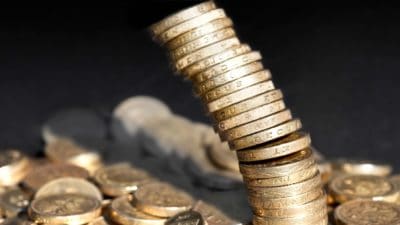Everyone likes a decent dividend — income investors especially so, of course. Which is why some investors fixate on yield: the higher the yield, the bigger the dividend.
But yield figures can be deceptively dangerous, and investing in companies with high yields can spectacularly backfire, leaving investors nursing losses of both capital and income.
That said, not all yield figures are suspect. Judiciously selected, shares on a high yield can turn out to be solid investments, locking in both a decent income and capital gains.
How can published yield figures be so misleading? And what can investors do to minimise the risk?
Let’s take a look.
How yield calculations work
First, a quick reprise. The yield figures you’ll see quoted in newspapers, on websites, and on your broker’s company information pages are almost always what are termed historic yields.
The specifics of the actual calculation can vary a little, but the basic idea is straightforward.
Let’s say that Company X has a share price of 100 pence, and last year paid out 5 pence a share in dividends: a 2 pence interim dividend at the half year stage, and a 3 pence final dividend.
So the yield calculation is 5 pence over 100 pence: 5%, in short. Take a look at your broker’s company information pages, and you’ll likely see that exact calculation.
That said, as I say, you’ll sometimes see a slight departure from that. The most common is the ‘trailing twelve month yield’, which will produce slightly different figures, particularly with shares that pay quarterly dividends.
Part way through the financial year, for instance, the dividends that go into the calculation will be some from the current financial year, and some from the previous financial year.
But the basic calculation is as I describe.
Share price down, yield up
So what can go wrong?
Plenty.
Imagine for a moment that our company — Company X — encounters some adverse trading conditions. Revenues are going to be down. Well down. So are profits.
The share price halves. What happens to yield?
Well, we’ve now got that 5 pence dividend — which is a historical fact, of course — expressed as a percentage of the now-halved share price, 50 pence.
Hey! A 10% yield. Brilliant! Let’s buy the shares!
Er, no. Because with the next set of results, management scraps the dividend again, thereby not paying either an interim dividend or a final dividend.
Garbage in, garbage out
What happens to the yield now?
Well, that original 5 pence dividend was made up of a 2 pence interim dividend and a 3 pence final dividend, so to some extent it depends on which precise set of results is involved.
So let’s assume that it’s the final dividend of 3 pence that was scrapped.
Our yield calculation then becomes 2 pence as a percentage of 50 pence, or 4%.
Which is still tasty — but almost certainly illusory. It will take a further six months before the data reflects the reality: Company X is no longer paying dividends.
Dig deeper
What to do?
The simplest thing to do is view high yields as suspect, and do more investigation before buying. Now, it’s important to be clear as what we mean by ‘high yield’. Not all high yields turn out to be suspect: many aren’t.
But a yield very much higher than, say, 6% or 7% certainly indicates a somewhat depressed share price, and there’s likely to be a reason. Even if it’s only that the market doesn’t think much of a given company’s growth prospects.
Personally, I like high-yielding companies. But equally, I like to think that I take the trouble to take a view as to why a given company is higher-yielding.
Look forwards, not backwards
There’s another course of action, though: where possible, avoid using historic yield — or at least supplement it by another type of yield calculation, forecast yield.
Many larger companies are covered by financial analysts, and these often provide estimates of future dividends — next year, and perhaps the year after.
Some financial websites and data providers collect these estimates, and combine them to form consensus views — an average estimate, in other words.
These future-looking yields go under different names, which doesn’t make finding them any easier. “Future yield”; “prospective yield”; “forward yield”; “forecast yield”; “consensus estimate yield” — all of these terms are used.
Where to go to find forecast yields? Check your broker, first. Then check your favourite data provider. Yahoo also carries forecast yields, sourced from Morningstar.
Happy hunting!







